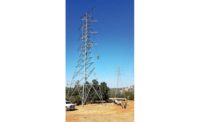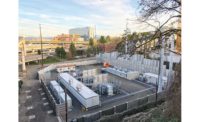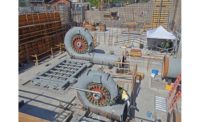ENR California's 2017 Best Projects
Energy/Industrial Best Project and Excellence in Safety: Barren Ridge Renewable Transmission Project

The Barren Ridge renewable transmission project created a 62-mile “energy superhighway” strung across the Angeles National Forest and the Mojave Desert.
PHOTO BY DERIK OLSEN, COURTESY OF BARNARD CONSTRUCTION

The Barren Ridge renewable transmission project created a 62-mile “energy superhighway” strung across the Angeles National Forest and the Mojave Desert.
PHOTO BY DERIK OLSEN, COURTESY OF BARNARD CONSTRUCTION

The Barren Ridge renewable transmission project created a 62-mile “energy superhighway” strung across the Angeles National Forest and the Mojave Desert.
PHOTO BY DERIK OLSEN, COURTESY OF BARNARD CONSTRUCTION

The Barren Ridge renewable transmission project created a 62-mile “energy superhighway” strung across the Angeles National Forest and the Mojave Desert.
PHOTO BY DERIK OLSEN, COURTESY OF BARNARD CONSTRUCTION




Barren Ridge Renewable Transmission Project
Lancaster, Calif.
Best Project
Owner: Los Angeles Dept. of Water and Power
Lead Design Firm/Civil/Structural Engineer: Black & Veatch
General Contractor: Barnard Construction Co.
Foundation Installation: Brent Woodward Inc.
Lattice Tower and Conduction Installation: Wasatch Electric
The Barren Ridge renewable transmission project created a 62-mile “energy superhighway” strung across the Angeles National Forest and the Mojave Desert.
The 230-kilovolt transmission line allows the Los Angeles Dept. of Water and Power to bring new sources of renewable energy to its 1.4 million customers. The project required the construction of 306 steel lattice towers in 18 months, scheduled around two time-sensitive critical outages.
“In the remote environment and over 60 miles of terrain, this effort was tremendous,” said one Best Projects judge.
Work on the project began with team members flying over prospective lines in helicopters: surveying, shooting video and developing a construction plan. Eight remote tower sites had no vehicle access and were originally to be accessed by helicopter, but the team instead built access roads through rugged mountainous terrain, saving more than $3 million.
The project crews faced environmental challenges. Flash flooding after heavy rainstorms caused significant damage to equipment one year into the project. The crews installed extra fencing to keep out desert tortoises, a protected species, while the discovery of nesting bird habitats required the team to build buffer zones and delay scheduled work until the hatchlings left the nests.
The team also contended with widely varying soil conditions. Erecting the newly designed structures required more than 1,200 drilled pier foundations. Engineers compiled 81 geotechnical soil borings across desert, forest and mountainous terrain, taking into consideration both settlement-causing down-drag soils and areas of liquefaction. The resulting foundations required more than 13,000 cu yd of concrete to support the transmission line.
The project team drew on worldwide resources and expertise in designing, fabricating and testing the project’s structures and technology. The towers were fabricated in Mexico and tested in India, while the conductors were tested by the Shanghai Research Institute in China.
Safety features were built into the lattice towers’ design, since much of the work required crews to assemble and climb towers up to 200 ft tall. “The towers provide rigging that makes sure workers never not have a point of contact in terms of tethering to the towers themselves,” says Kevin Heller, project manager at Black & Veatch.
The team also established strict safety protocols and emergency rescue drills for the project’s 225 employees spread among 25 crews. This training culminated with a high-angle rescue drill with the Los Angeles County Fire Dept. during which the crew rescued an “injured” crew member from the 167-ft level of a 190-ft tower. Once the person was lowered to the ground, fire personnel lifted him into a helicopter for transport to the hospital.
Related Article: Communities Are the Real Winners







